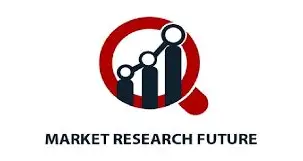Phthalic Anhydride Market Growth Analysis and Future Forecast 2024–2032

Public Transport
The Phthalic Anhydride (PA) Market has witnessed substantial growth in recent years, driven by increasing industrial applications, especially in plasticizers, resins, and coatings. Phthalic anhydride, a versatile chemical intermediate, is primarily produced through the oxidation of o-xylene or naphthalene. Its wide-ranging applications in the manufacture of plasticizers, unsaturated polyester resins (UPR), alkyd resins, and phthalate plasticizers make it a critical raw material across multiple industries, including construction, automotive, packaging, and electronics.
One of the key growth drivers of the Phthalic Anhydride market demand is the surging demand for flexible PVC, which is extensively used in cables, flooring, and automotive interiors. Phthalic anhydride is a vital component in the production of dioctyl phthalate (DOP) and other phthalate esters, which act as plasticizers to enhance the flexibility, durability, and longevity of PVC products. With rapid urbanization and increasing construction activities worldwide, especially in emerging economies such as India, China, and Brazil, the demand for PVC and related products has seen a consistent upward trend, subsequently fueling the phthalic anhydride market.
Another significant factor contributing to market expansion is the growing automotive industry. Modern vehicles rely heavily on lightweight materials and flexible plastics to improve fuel efficiency and reduce emissions. Phthalic anhydride-based plasticizers play a crucial role in achieving these objectives, particularly in the manufacture of dashboards, interior trims, and insulation materials. Additionally, the growing trend of electric vehicles (EVs) is anticipated to further boost the demand for high-quality plasticizers, thereby positively impacting the phthalic anhydride market level.
The resin industry is another major consumer of phthalic anhydride. Unsaturated polyester resins, which rely on PA as a primary ingredient, are widely used in composite materials, coatings, and fiberglass-reinforced plastics. These materials are essential in construction, marine, and aerospace applications due to their superior mechanical strength, corrosion resistance, and thermal stability. The increasing adoption of lightweight composites in infrastructure development and renewable energy sectors, such as wind turbine blades, is expected to drive further demand for phthalic anhydride in the coming years.
Geographically, Asia-Pacific dominates the Phthalic Anhydride market, with China and India being the largest consumers and producers. Rapid industrialization, expanding manufacturing capacities, and rising disposable incomes contribute to significant demand for end-use products like plastics, coatings, and automotive components. North America and Europe are also witnessing steady growth, driven by high standards of quality and stringent environmental regulations that encourage the use of advanced and sustainable plasticizers.
Sustainability and environmental regulations are shaping the future trajectory of the phthalic anhydride market. The shift toward non-phthalate plasticizers due to health and environmental concerns is prompting manufacturers to innovate and develop eco-friendly alternatives. Despite these challenges, the market continues to grow as phthalic anhydride remains indispensable in numerous industrial applications. Companies are increasingly investing in research and development to enhance process efficiency, reduce emissions, and produce high-purity PA to meet the evolving demands of end-users.
The competitive landscape of the phthalic anhydride market is characterized by the presence of both global and regional players. Leading companies focus on capacity expansion, strategic partnerships, mergers, and acquisitions to strengthen their market position. Some of the prominent players in the market include Hubei Xingfa Chemicals, Anhui Secco Petrochemical, BASF SE, LyondellBasell Industries, and Reliance Industries Limited. The emphasis on technological advancements, cost-effective production processes, and sustainability initiatives is expected to intensify competition and drive innovation across the sector.
Looking ahead, the phthalic anhydride market is projected to witness moderate to significant growth over the next decade. Factors such as rising construction activities, increasing demand for flexible plastics, growth in automotive and electrical industries, and expansion of resin-based applications will continue to support market expansion. Furthermore, advancements in green chemistry and sustainable manufacturing practices are likely to create new opportunities for manufacturers and investors, ensuring the market’s long-term resilience and profitability.
In conclusion, the Phthalic Anhydride Market holds a critical position in the global chemical industry. Its diverse applications across plasticizers, resins, and coatings, coupled with increasing industrial and construction activities, contribute to sustained growth. While environmental challenges and the push for non-phthalate alternatives may influence production and demand patterns, ongoing innovation and technological progress are expected to maintain the market’s upward trajectory. Stakeholders in the chemical, construction, automotive, and plastics sectors should monitor market trends closely to capitalize on emerging opportunities and stay competitive in a rapidly evolving landscape.


